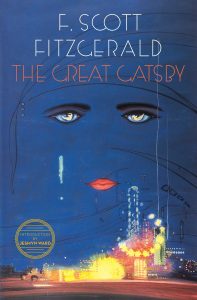
“You can’t repeat the past.”
“Repeat the past, why of course you can!”
This exchange occurs between two of literature’s most famous characters, Nick Carraway and Jay Gatsby, both featured in F. Scott Fitzgerald’s timeless classic, The Great Gatsby. On this day, April 10, we mark 100 years since the publication of this American novel, which has an immeasurable impact of literature. It has been adapted into films on numerous occasions, inspired numerous spinoffs, and made us all want to go back in time and become a flapper.
Personally speaking, it is one of the core books that inspired my own literary journey, both in reading and writing. Like many Americans, I first picked up this book as a teenager in high school when it was assigned in my English Literature class. From the first page, even the first line, I was hooked and have never stopped loving this timeless story. Which put me at considerable odds with the rest of the students in class, who all seemed to take a dislike of Gatsby’s story but my own thoughts about why that may be will come later.
But even now, over a decade since I first picked up this story, I am reminded of Gatsby‘s literary impact, particularly about the themes and ideas at the core of the story. What are they and why are they just as important today as they were 100 years ago? I plan to answer that but first I want to talk to you about the tumultuous history of The Great Gatsby.
History of America’s “great novel”
F. Scott Fitzgerald published his magnum opus on April 10, 1925. At the time, Fitzgerald was one of America’s most celebrated authors, achieving success with his previous two novels, This Side of Paradise (1920) and The Beautiful and Damned (1922). At the time of its release, The Great Gatsby was met with positive reviews from literary critics but many noted it paled in comparison to Fitzgerald’s previous works. Whether because of this or because audiences did not take to the story or a combination of both, The Great Gatsby was a financial failure. By October of 1925 it had sold less than 20,000 copies. This seemed to be the beginning of the end for Fitzgerald’s career and while he continued to write, publishing a fourth novel, Tender Is the Night, in 1934, by the time he died in 1940 he viewed himself as a failure and that his work would be forgotten.
Thankfully, fate intervened.
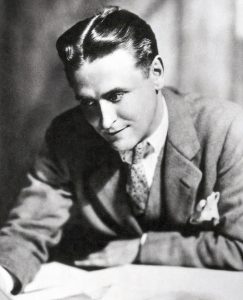
During World War Two the Council on Books in Wartime distributed free copies of American novels to its soldiers. Among the books chosen was The Great Gatsby. The novel became a smash hit with the troops, who went on to share the story with their families and friends upon returning home. The new found popularity of Gatsby forced literary critics to re-examine the work, who found many of the themes and ideas to be as relevant in their present time as it was in 1925. Within a few short years the book was introduced into American high school curriculum which, as I mentioned earlier, is how I first came into contact with this story. By the turn of the century, millions of copies had been sold around the world, solidifying it’s place as one of literature’s most famous novels.
Now with the history out of the way, let’s talk about the themes of Gatsby. While there are quite a few of them, I’m going to limit myself to the top three. Also, an important note to make. It has always been my goal on this blog to make it as welcoming and neutral as possible, particularly when it comes to current day politics. While I will make every effort to do the same when discussing these themes and ideas, there will be sometimes when current day events will have to be drawn. As I have always said, everyone is entitled to their own opinions and beliefs. These are merely mine.
The illusion of the American Dream
Even if you don’t live in the United States, you have undoubtedly heard about the American Dream, the idea that if someone comes to America, they will have endless opportunities and will be successful, both in their personal and professional lives, regardless of where they started out in life. However, by 1925, this idea was beginning to lose some of its momentum. Writers in particular have always pointed out that the idea of the American Dream is an illusion. John Steinbeck discussed the idea of the American dream heavily in Of Mice and Men, demonstrating how difficult and almost impossible it is to achieve that ideal while admitting that, on some occasions, it can be achieved. Playwright Arthur Miller portrayed it as a fruitless pursuit in his 1949 play Death of a Salesman and, more recently, Hubert Selby Jr. used his novel Requiem for a Dream to show the dark side of the American Dream as his four main characters fight with addiction.
Fitzgerald proved to be no exception in Gatsby. Jay Gatsby, the main character, is the be the embodiment of the American Dream. We learn throughout the story that Gatsby came from virtually nothing and was able to accumulate great wealth and influence over the coming decades. This, of course, comes at a cost which included losing the love of his life, Daisy Buchanan, several years earlier. But now that Gatsby is rich and successful, he believes he can achieve his ultimate dream, which is winning back Daisy.
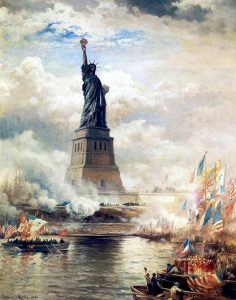
For those who have read the story, you know that does not end up happening and this decidedly sad ending is Fitzgerald’s way of demonstrating that the American Dream is not obtainable for everyone and merely an illusion created by the American government to convince everyday people to work even harder and turn more profits for big corporations and the government. It’s an arguably very cynical look at the world, but recent statistics has shown this idea is more relevant than ever.
In an article by journalist Michael Hobbes, it is noted how millennials are generally less well off than their parents’ generation, a first since the Great Depression. Despite being the most educated generation in American history, millennials have taken on 300% more student debt than their parents, they are 50% less likely to own a house as young adults were in 1975, one in five live in poverty, and based on current trends many won’t be able to retire until the age of 75. Not exactly the statics that back up the idea that everyone can achieve personal and professional success as authors of the American Dream would have one dream and while there are success stories to be found, they are becoming few and far between.
Fitzgerald’s ability to show the facade surrounding this concept demonstrates a deeper understanding of the American mind that critics, when first reviewing the story, were unable to pick on and it is understandable why. By 1925, America was in the middle of an economic boom and the idea that people couldn’t achieve everything they wanted seemed unbelievable but, as recent history has shown, it can unfortunately be a very real reality for many.
Sexuality and Identity
Even as a teenager, I remember reading Gatsby and being struck by the discussion and insinuation of sexuality and identity.
In particular, I’m talking about the characters of Nick and Daisy Buchanan’s best friend, Jordan Baker.
It is generally agreed upon by literary critics and historians that Nick and Jordan are closeted homosexuals. In one scene, Nick departs an orgy with a man who is described in feminine language and, following some suggestive ellipses, finds himself standing beside a bed while the man sits between the sheets in just his underwear. As far as Jordan, critics have noted that she is often described in masculine terms and, out of all the characters, seems to have the most honest conversations with Nick, leading some to believe that is because they share similar experiences with their sexuality.
While this can be open to every reader’s own interpretation, what is apparent is Fitzgerald used Gatsby to demonstrate the turning tide of gender stereotypes and sexuality in the 1920s. It was the first decade in which women were able to freely express themselves (not as freely as by today’s standards) by wearing shorter dresses, cutting their hair into bobs, and going out to clubs and drinking the night away. Additionally, this time in history saw the first steps towards acceptance to homosexuality. They might have been very small baby steps but in Germany, the decade saw some of the first transgender operations taking place and more gay clubs opening. This, of course, all came to scratching halt with the rise of Nazism in 1933, but it was a pivotal step nonetheless.
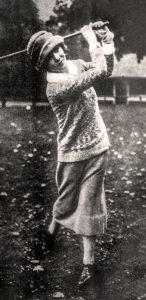
The theme of sexuality and identity and its importance to Gatsby continues to be felt today. While society has come a long way in terms of these topics, many still find themselves hiding their true identity for fear of their own safety. Hate crimes against the LGBTQ+ community continue to occur at a disturbing pace and women’s rights seem to be constantly be hanging in the balance. Only a few months prior to me writing this article, social media was sharing the courageous story of Ahoo Daryaei, who stripped down to her under garments and walked around one of Tehran’s universities in protest of the removal of women’s rights in the country and after she had been ordered by the country’s morality police to wear a headscarf. While Daryaei was eventually released from police custody, there is no telling what physical and psychological torture she might have experienced, a sad reality for many women who take similar steps.
The fact that sexuality and identity continues to be an ongoing struggle for many only fuels the importance of the theme in Gatsby. There are still groups of people around the world that face discrimination for who they are and by having works like Gatsby available it allows readers to connect with these individuals and create a society that is more accepting and tolerant of others.
The dangers of nostalgia
The third idea I want to mention that is extremely prevalent in Gatsby is that nostalgia can be filled with dangers. Throughout the story, Jay Gatsby longs to be reunited with Daisy while refusing to recognize that it is impossible to relive something that occurred in the past. Gatsby is nostalgic about the past, associating it with a glorious time in his life. However, as Nick regularly points out, Gatsby can not go back and repeat it. This romanticizing of nostalgia, Fitzgerald warns, can be dangerous.
This idea can be very true when discussing certain time periods in history. For example, the 1920s has been drenched in nostalgia to the point that most people would consider this period in time as a glorious one. The idea of staying out all night at clubs, listening to jazz music, and doing the Charleston sounds like a good time and even romantic, a theme that is, ironically, continually perpetuated by people picking up books like Gatsby. Yet, it was also a dark period as well. Racism and discrimination still ran rapid in the United States, most of Europe was on the brink of economic collapse, and the world saw a rise in fascism and communism. Despite this, one might be hard press to find someone who would mention any of those when asked about their thoughts of that time period. The nostalgia for the time period has blurred our perception of the era.

That is not to say it can’t be reversed, or at least made more realistic. For many decades after the end of the Civil War in the United States, there was a romanticizing of the South prior to the conflict. This has changed. As a society we now recognize that time period as a dark one as this “nostalgia” hid the ugly truth that it was built on the suffering of slaves.
The dangers of nostalgia is a vital theme to Gatsby. While Fitzgerald uses his novel to suggest that not all nostalgia is bad, it is important to be kept in check or we risk forgetting about the challenges that others faced during that time.
Conclusion
Since it’s revival in the 1940s, The Great Gatsby has remained a pivotal cornerstone of American literature. It’s influence is still felt to this day, a great shock it would undoubtedly be to it’s author. When F. Scott Fitzgerald died on December 21, 1940 at the age forty-four due to a heart attack, he was a shell of his former self. The young, successful writer that had written Gatsby fifteen years earlier was long gone and when the few critics who did remember Fitzgerald reflected on his work after his death, most came to the conclusion that he was nothing more than a failed alcoholic – the ultimate embodiment of Jazz Age decadence.
Earlier in this post I noted that when my English class read Gatsby almost all of my classmates disliked it. While I cannot recall all their exact criticisms, I do remember many stating they found the story completely irrelevant and Jay Gatsby’s longing to return to a time in the past as ridiculous. Who would want to live in the past?
I would argue that exact question is the real reason why they took a dislike to the story and why it is such an important book.
As sixteen year olds, the last thing any student wants to acknowledge is that there will be a point in their lives where it won’t be smooth sailing and they will have regrets. This is not to say that no teenager doesn’t acknowledge this or has never experienced any hardships in life but when one is that young, they are filled with optimism and hope for the future.
Yes, you are going to do well in college. Yes, you are going to get that six figure salary right out of the gate. Yes, you’ll be able to afford your rent with no problem and have plenty of money to save up for your house.
No, you will always be close with your friends with high school. No, that guy you thought you had a connection with on Bumble isn’t standing you up, he’s merely having car trouble and that’s why he hasn’t appeared for your date yet. No, pasta doesn’t make you fat, that’s just an old wives’ tale.
Gatsby is a novel that picks up the mirror and holds it in front of you, reminding you that not everything is going to be easy and life is not always going to be what you hoped it to be. But, you can still make the best out of it and while this might be hard to believe, especially if you know how the story ends, there is optimism in the story if you look for it.
At the beginning of the story, our narrator, Nick, is an idealistic young man who thinks anything is possible. By the end of it, Nick has grown up and realizes that the lessons he learned by observing Gatsby and his companions will be important stepping stones in his life. Not everything in life will go the way you want it to go, but that doesn’t mean it is the end. If Jay Gatsby had learned this he would have undoubtedly avoided his tragic ending.
Life is far from easy and struggles are a part of it. But if we beat on, boats against the current, we might just find the happiness and success we always wanted.
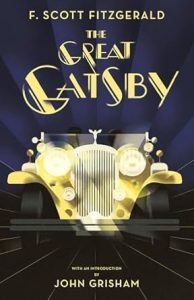
Sources:
Millennials are Screwed by Michael Hobbes, https://highline.huffingtonpost.com/articles/en/poor-millennials/
Iranian woman detained after undressing released with charge by Jacqueline Howard, https://www.bbc.com/news/articles/cwy42vxd99po



Add Your Thoughts